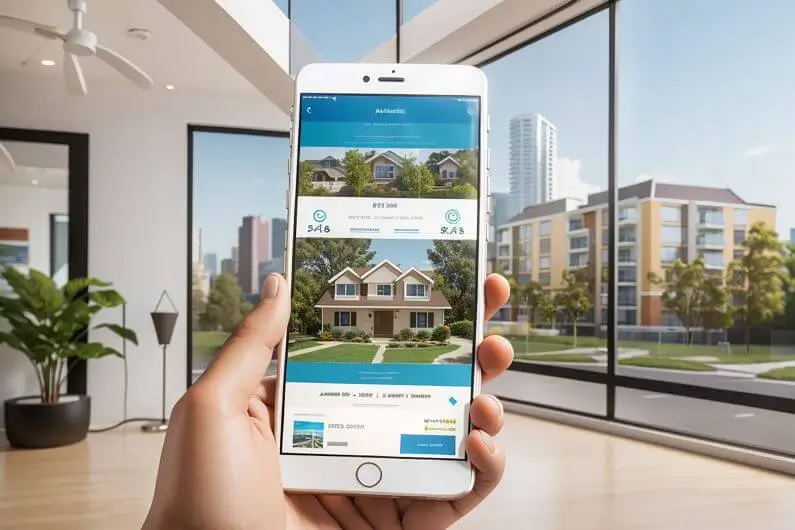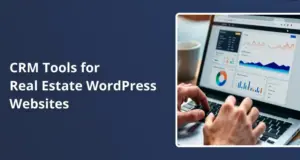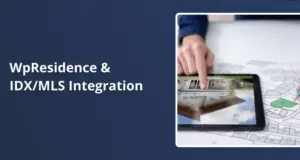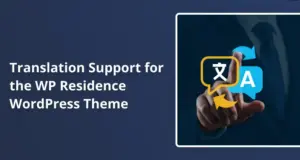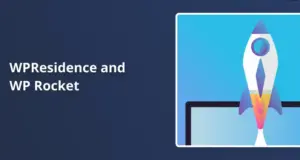Real estate mobile apps have become key to buying, selling, and managing property. Many look for ways to find the perfect home without checking yard signs or classifieds. The tech transformation also affects WordPress users. A WordPress site can display property listings, and a companion mobile app can pull those listings through an API, keeping data in sync.
What Real Estate Mobile Apps Do
These apps serve buyers, renters, agents, and investors. They can show up-to-date property info, handle transactions, and keep communication flowing. Some apps lean on WordPress-based sites for data. That means you can send real-time updates to a mobile app if you use a custom plugin or a property listing theme.
It’s tough to cover every niche in a single solution. An app that tries to please all users at once may become bloated. It’s better to decide which core group you want to reach—may be homebuyers who need fast property alerts or agents seeking easy property management.
Why a Real Estate App Is a Smart Business
Plenty of people rely on mobile devices to shop for rentals or homes. Interest in real estate technology and the real estate field is growing, and many individuals find the convenience of apps appealing.
They can browse pictures, watch virtual tours, and check a property’s location on their phones. It doesn’t mean the market is crowded with no room for newcomers. There’s still a place for apps with unique angles or advanced features.
Those who run WordPress sites can jump in by creating a mobile-friendly environment. A dedicated app that taps into the same property database can stand out. You might also integrate WordPress user accounts, letting buyers or tenants log in to the site and the app without friction.
Types of Real Estate Apps
There are many variations. Some apps focus on quick home searches, while others target property managers or investors. These four are popular:
- Property Search Apps
- Let people filter listings by location and budget.
- Show area data, like schools or local stores.
- Sync with a WordPress site that updates listings.
- Real Estate Investment Apps
- Allow partial investment in properties.
- Present analytics on ROI and neighborhood growth.
- Notify users about new investment deals.
- Property Management Apps
- Make it simple for owners to handle leases.
- Offer rent collection or maintenance tracking.
- Link with WordPress dashboards for easy oversight.
- Mortgage Calculator Apps
- Estimate monthly payments.
- Compare different loan types.
- Provide loan tips or direct lender contacts.
Essential Features People Expect
App users demand a smooth experience that covers their real estate needs. These features often matter most:
- User Profiles
- Let them store searches and listing alerts
- Give agents a space to add bios or expertise
- Property Listings
- Show pictures, prices, and descriptions
- Include contact buttons for direct inquiries
- Filters & Search
- Narrow results by neighborhood or price
- Highlight property size or the number of rooms
- Maps
- Display the property’s neighborhood
- Show local points of interest
- Favorites & History
- Let users save their favorite properties
- Keep track of search history for easy return
- Notifications
- Alert them about price drops or new listings
- Notify them of messages from owners or agents
- Communication Tools
- In-app chat for quick replies
- Schedule calls or viewings
- Reviews & Ratings
- Let users assess agents or properties
- Build trust with public feedback
More Advanced Elements
Going further can help your app stand out. That might mean adding:
- Integrated Payments. Collect rent or deposits through the app.
- Virtual Tours. Let potential buyers see the layout through 360-degree tours.
- Predictive Search. Suggest listings based on user behavior.
- AR Features. Users can place virtual furniture or see property upgrades.
- Chatbots. Offer quick answers about listings or pricing.
- E-Signature. Provide paperless ways to sign lease or sale contracts.
The Development Process
Building a real estate mobile app goes beyond writing code. It starts with discovering who might use the app and how competitors handle similar ideas.
That flows into the design, where wireframes shape the layout and align everything with your brand. App development then adds core features like listings, maps, or chat, possibly tapping into WordPress if you have an existing site.
Testing checks how the app runs on different devices and fixes issues before release. Once the app appears in stores, the team improves it based on user input. Some projects begin with a smaller version—often called an MVP—to gather feedback and expand.
WordPress site owners can do the same by sharing a basic version of their listing data with a small audience before rolling it out more widely.
Cost Factors
Expenses depend on the complexity of features and how many platforms you want to support. Custom design, advanced tech like AR, or a multi-platform launch can raise the bill. The same goes for building a robust WordPress plugin that syncs everything in real-time.
- Feature Set. Simple search is cheaper than adding AR or predictive search.
- Platforms. Creating apps for iOS and Android costs more than building one for a single platform.
- Design & Testing. Quality interfaces and thorough testing take time.
- Maintenance. After launch, you’ll budget for updates and new features.
A Project Case
Teams often face significant challenges with large property databases or user demand for instant results.
Suppose you have an existing WordPress site with thousands of listings. You plan to release a mobile app that syncs with the same database. You’d first ensure your site’s backend can handle all that traffic. Then, you’d craft a user-friendly mobile interface with map views, property details, and direct messaging.
That approach has a few steps. One is stabilizing the data architecture so you don’t crash under load. Another is refining design: the site might have a real estate theme, but your mobile app needs a layout that’s easy to tap on a phone.
You also might add a monetization strategy, such as a feature promoting specific listings or charging membership fees for advanced search.
Final Thoughts
A well-planned real estate mobile app can reshape the buying or renting experience, creating convenience and speed for both sides. Tying the app to a WordPress site can deepen engagement by giving visitors a cross-platform approach.
Buyers, sellers, or renters can interact from any device. This synergy between web and mobile might help your service gain a loyal audience.
Want more info on real estate data or mapping tools? Here are a few ideas:
FAQ
1) How can I get started with real estate app development?
- Research the market
- Choose essential features like listing search and interactive maps
- Decide if you’ll link it to a WordPress site
- Build an MVP, gather feedback, then refine
2) What must-have features should I include?
- User profiles, property listings, filters, and a map
- Favorites and alerts for new listings
- Reviews and communication options
3) What’s the cost range?
- A basic app might start around $40,000
- Adding AR tours or integrated payments can push costs higher
- Maintenance expenses come later
4) How long does it usually take to develop?
- Simple apps might need around three to six months
- Complex projects with advanced features can go beyond nine months
- Factor in time for testing and user feedback
5) What types of real estate apps see the most demand?
- Property search tools
- Investment platforms
- Property management suites
- Mortgage calculators
That covers the fundamentals. Building a real estate mobile app means understanding your target audience, picking the right features, and ironing out the technical details. There’s plenty of room for new ideas, and a WordPress integration can take it even further.

